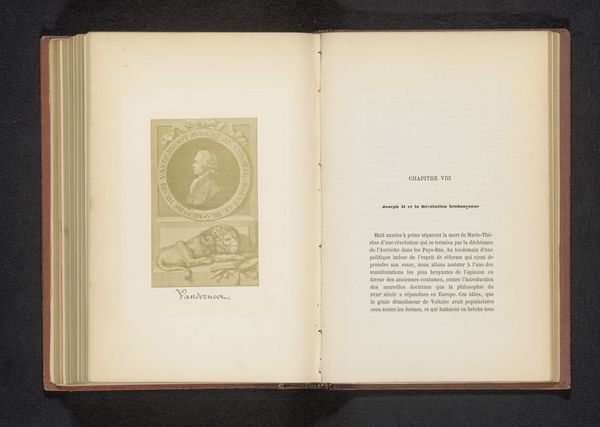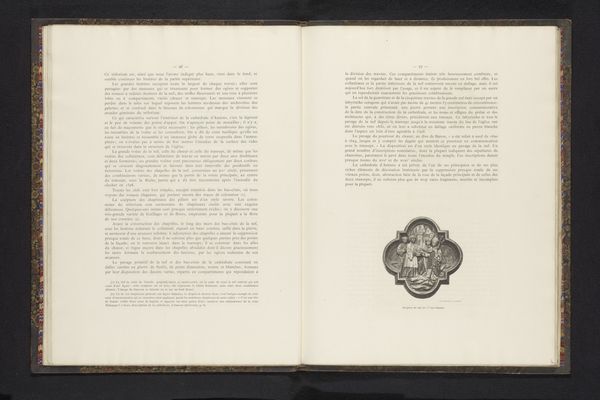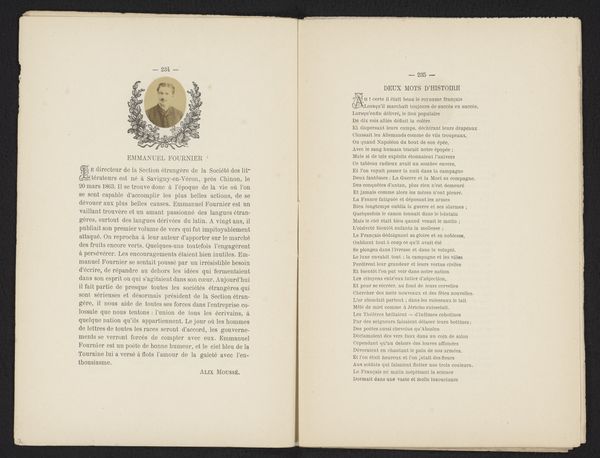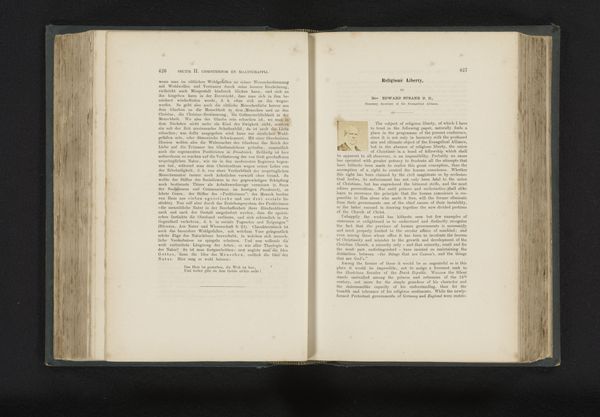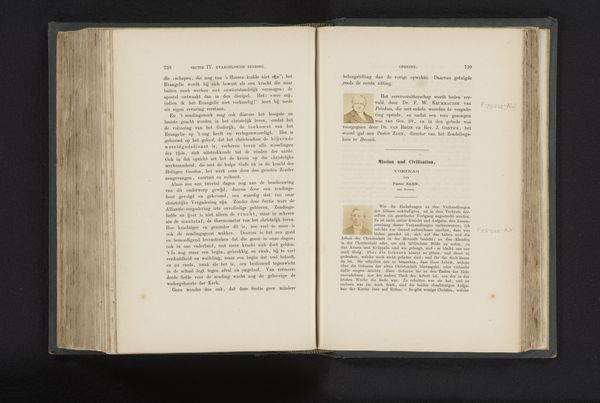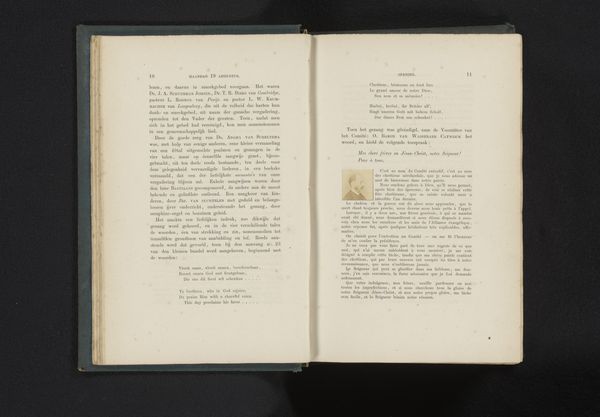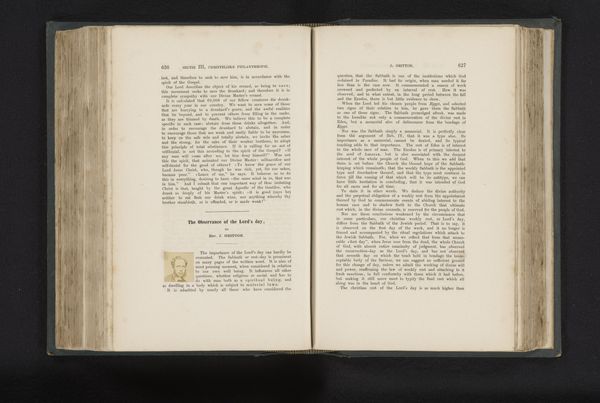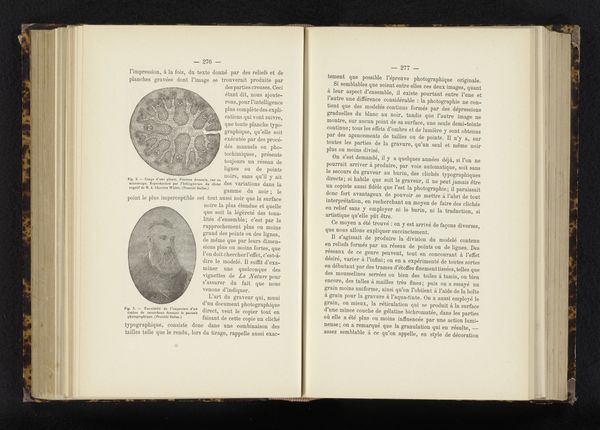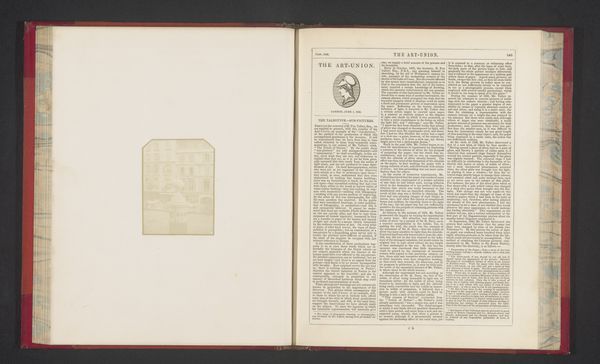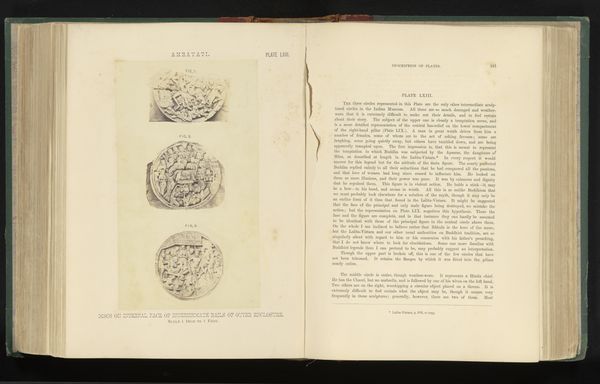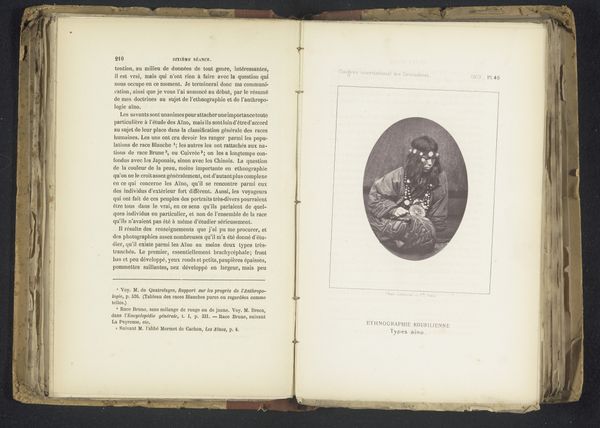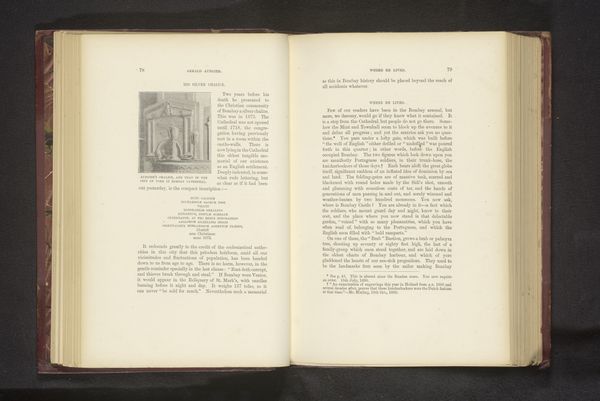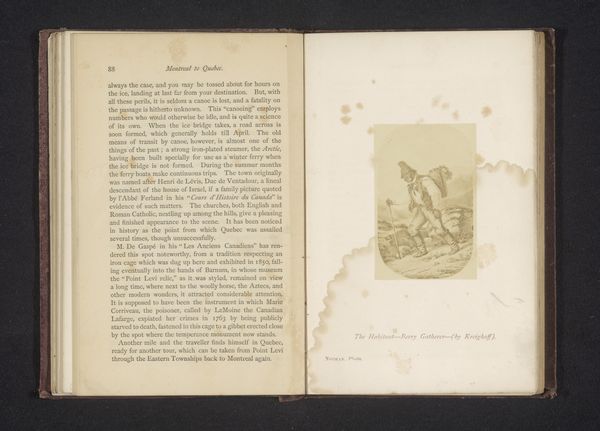
Twee zijden van de munt gemaakt ter gelegenheid van het vijftig jaar bestaan van de Young Men's Christian Association before 1895
0:00
0:00
anonymous
Rijksmuseum
print, photography
# print
#
photography
#
coin
Dimensions: height 110 mm, width 51 mm
Copyright: Rijks Museum: Open Domain
Curator: This fascinating print, created before 1895, commemorates the fiftieth anniversary of the Young Men's Christian Association. You can find it here at the Rijksmuseum. It appears to be a page torn out from an old book. What’s your first reaction to it? Editor: Stark! In terms of design, the commemorative coin has a crisp, austere formality that somehow speaks to the sober mission often associated with such organizations. The lack of embellishment draws your eye right to the symbols—what do you make of those? Curator: Well, the upper coin features the name of the organization encircled with foliage and some interesting geometrical decorations in the center. I would hazard a guess that this signifies growth, and strong moral structure, in an institutional manner. The lower one contains a profile of a bearded man and an important historical figure named George Williams. Editor: He looks serious indeed. Founder of the YMCA, if I'm not mistaken, situated amid the rising industrial age of London, grappling with issues of poverty and social alienation among young men flocking to cities in search of opportunity. Seeing it memorialized in print as opposed to something more substantial, for example metal, does this feel like a move in making information like this more available? Curator: Exactly! The move towards a wider distribution and accessibility for their 50th Anniversary says something about the era’s public role for charitable institutions. In this photographic reproduction, one sees an interesting dissemination of the organizations iconography from coin to page to photograph. Editor: How the act of printing itself echoes this aim toward dissemination. What strikes me too, is how this object—intended to memorialize a religious association and an important figure like Williams, as you mentioned—takes on new layers of meaning and complexity. Think about how the image moves and is adapted as it relates to identity, community, and public virtue during a certain place and point in history. Curator: Indeed! A printed memorial speaks volumes, perhaps literally! I believe these objects give us some fascinating things to consider as we navigate this history! Editor: I wholeheartedly agree. They push us to see art as entangled with cultural and social dynamics, making the visual and symbolic all the more meaningful.
Comments
No comments
Be the first to comment and join the conversation on the ultimate creative platform.
